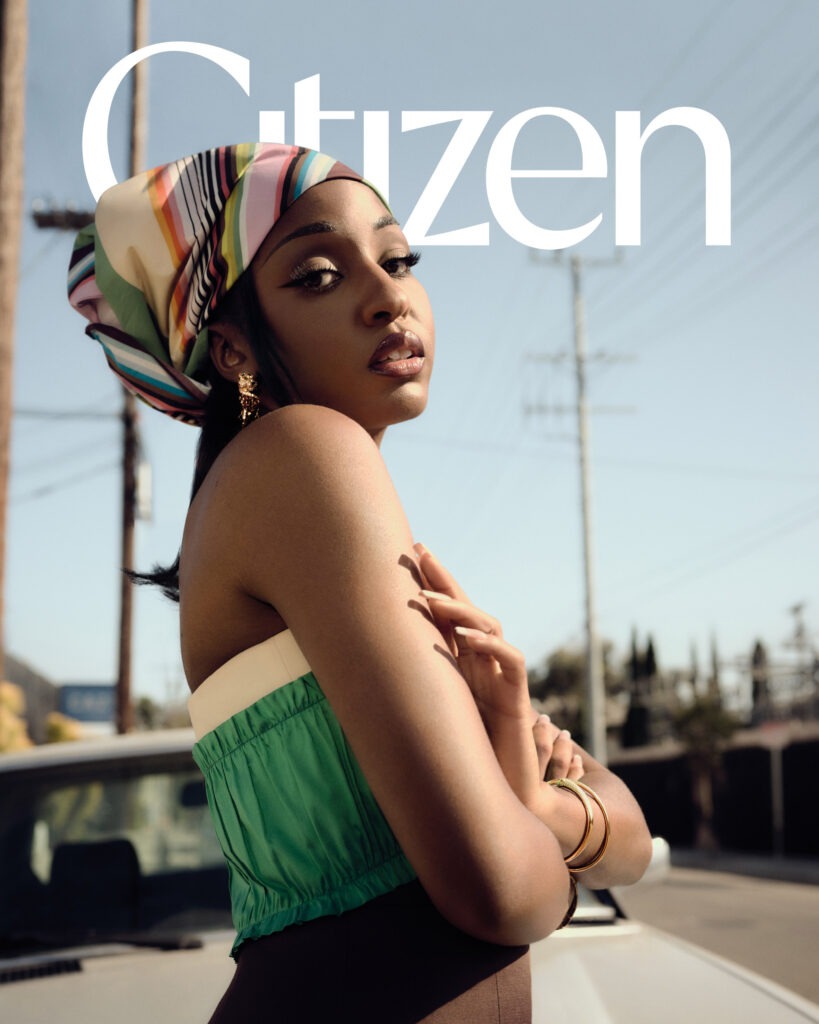Alva in Three Dimensions
The 2024 Model of the Year nominee and “face of” more campaigns than one can name sits down with her partner to discuss home, personhood, and going back to “self”.
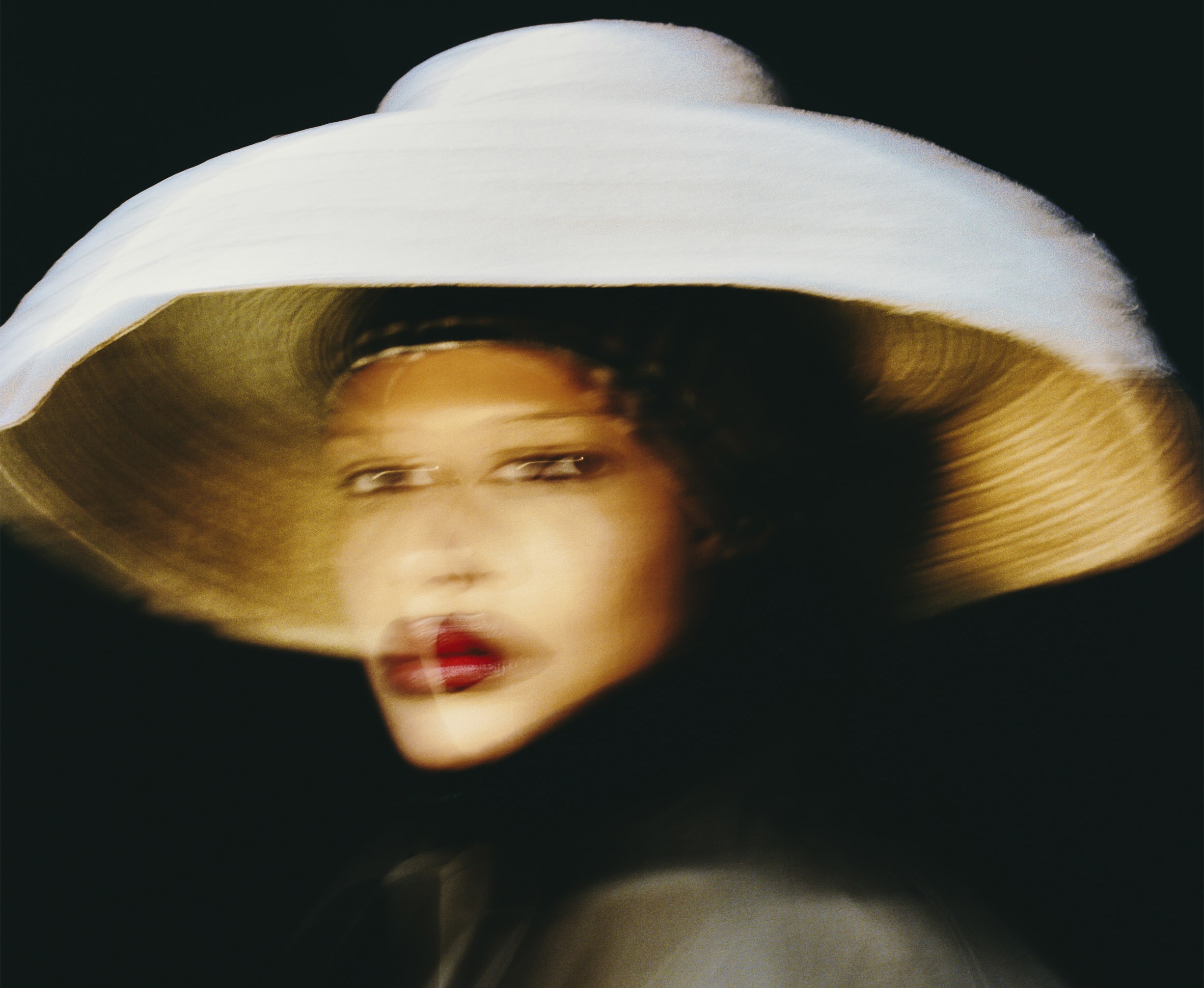
Photography by Danny Kasirye
Introduction text by Danielle Powell Cobb, Nora Taylor
Interview by Jenna Fletcher
Issue 004
In partnership with Burberry
Alva Claire has a remarkable face. If you do not know her name, you have surely seen her face. So, it is no surprise that her face tends to be the focus of how many might try to describe her in words. In 2021, Elle magazine’s Sara McAlpine declared Alva Claire “Britain’s Next Top Model” and described Alva as having been “made the face of a Calvin Klein underwear campaign.” In 2022, the Guardian’s Kate Finnigan described Alva as “the face of MAC cosmetics and of Rimmel London.” Then, earlier this year, following the announcement of Alva as a nominee for British Fashion Council’s Fashion Awards model of the year, Essence’s Kerane Marcellus noted that Alva had also recently been named “the face of an inclusive Hunza G campaign.”
The language is simple and familiar. We have heard and easily understood what it means for a model to be called the face of a campaign or brand. But is there not also something quite odd about that designation “face of?” The term seems to both constrict and expand–flattening the person into an image, disembodying the model from the rest of self, while also expanding upon the thing being represented. The term proposes that what or who represents a brand matters and that “the face of” has the ability to communicate an idea, something specific. What exactly? Beauty, youth, poise, rebellion, tradition, femininity, masculinity, newness, antiquity, luxury, value, or some other desired thing? Whatever it is, the “face of” aims to say without saying. It suggests an idea of what a brand is and who it is for.
“I’m becoming more familiar and comfortable with the idea that there is perhaps a version of “Alva” that grows beyond to people who don’t know me.”
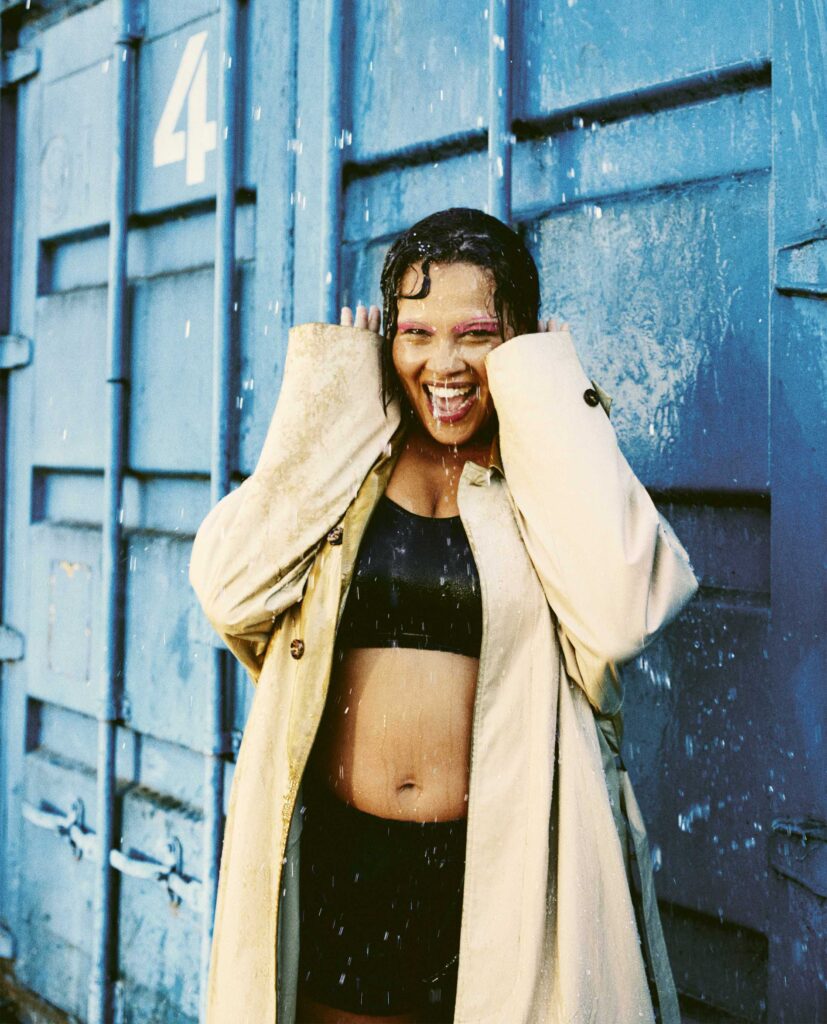
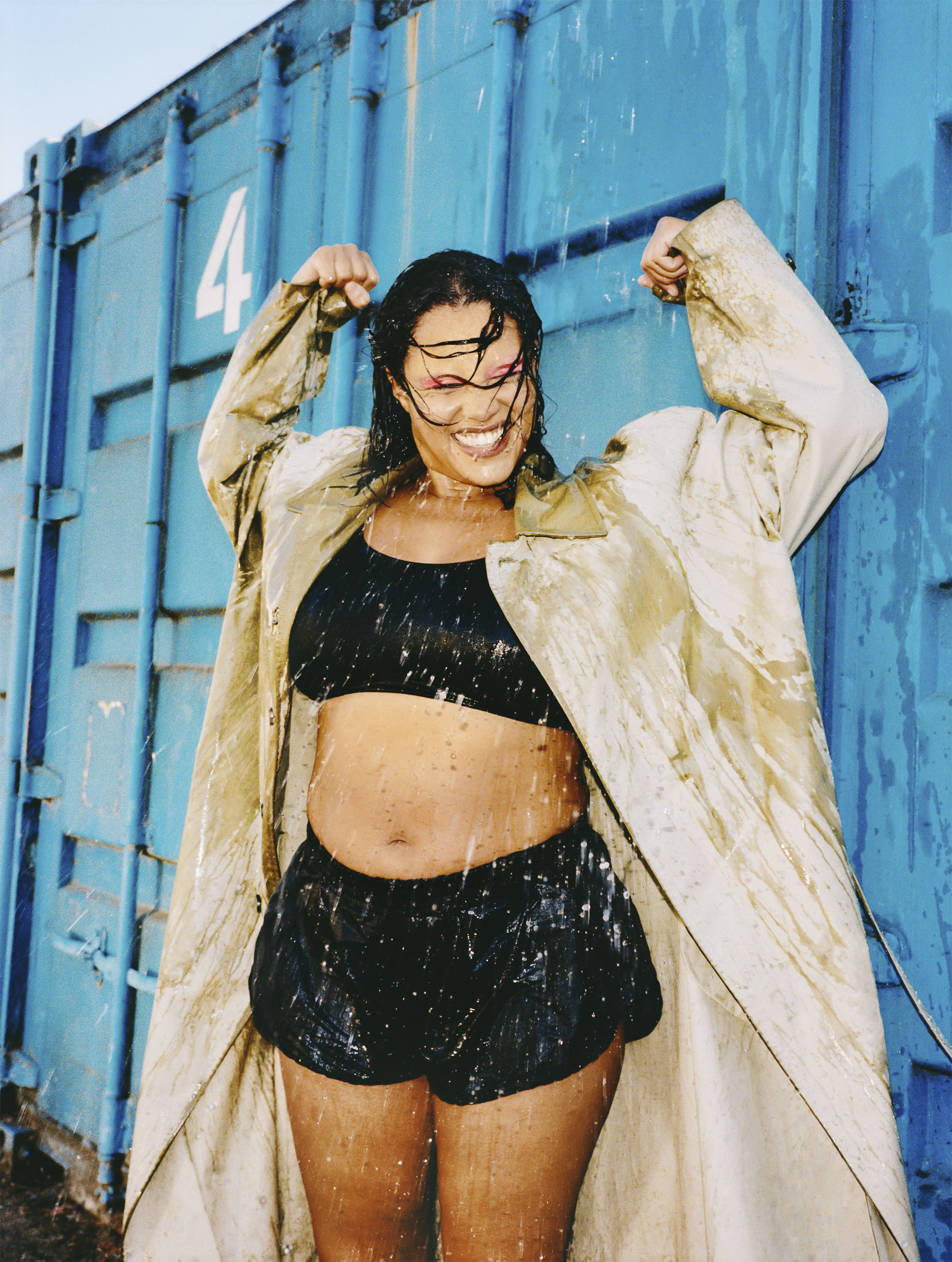
It is somewhere between that flattening and that expansion that Alva Claire, the model, sits. She is an utterly beautiful woman contained within the images we see of her. She is also a Black woman with a body more representative of the average woman than the bodies we have historically seen on the catwalk or in advertisements. She can not escape the fact that her presence and selection mean something– communicates with specificity even when they do not intend to. No model can. But unlike the models with no modifiers before the word “model,” Alva seems to be required to constantly discuss specifics, to carry immovable categorizations and grand ideas about her body and the reason she is here.
In January 2010, V Magazine devoted an entire issue to “plus-size” models. In February 2010, an NPR headline wondered whether plus-size models were “Fashion Week’s Latest Trend?”. In August of that same year, Marc Jacobs, via a Twitter exchange, teased launching a plus-size line. This simple public suggestion garnered headlines from almost every major news publication covering fashion news, proclaiming Marc Jacobs the first high fashion designer to offer “plus-sizes.” (The designer never did launch a plus-size line.) It was 2010, when an industry toying with the idea of greater inclusion and consistently describing “plus-size” as “trend,” that an 18-year-old, Alva, came across an ad for an agency seeking “plus-size” models.
She answered that ad and was signed to an agency for the first time. Slowly, Alva’s career built momentum, and since then, Alva has graced more magazine covers, appeared in more luxury ads, and walked for more runway shows than we have time or space to list. But it was during Milan Fashion Week in 2020 when the fever pitch reached a high. That fashion week, Alva was one of three “plus-size” models to walk the Versace runway show. This was the first time the Italian designer had ever used models designated “plus-size” as part of a runway presentation. The use of “plus-size” models during a Paris Fashion Week presentation by one of the industry’s most celebrated designers was interpreted widely as a signifier of a changing tide or a deeper acceptance of a more diverse range of bodies and a more inclusive industry–one that just might attempt to make and present clothes that more women could wear.
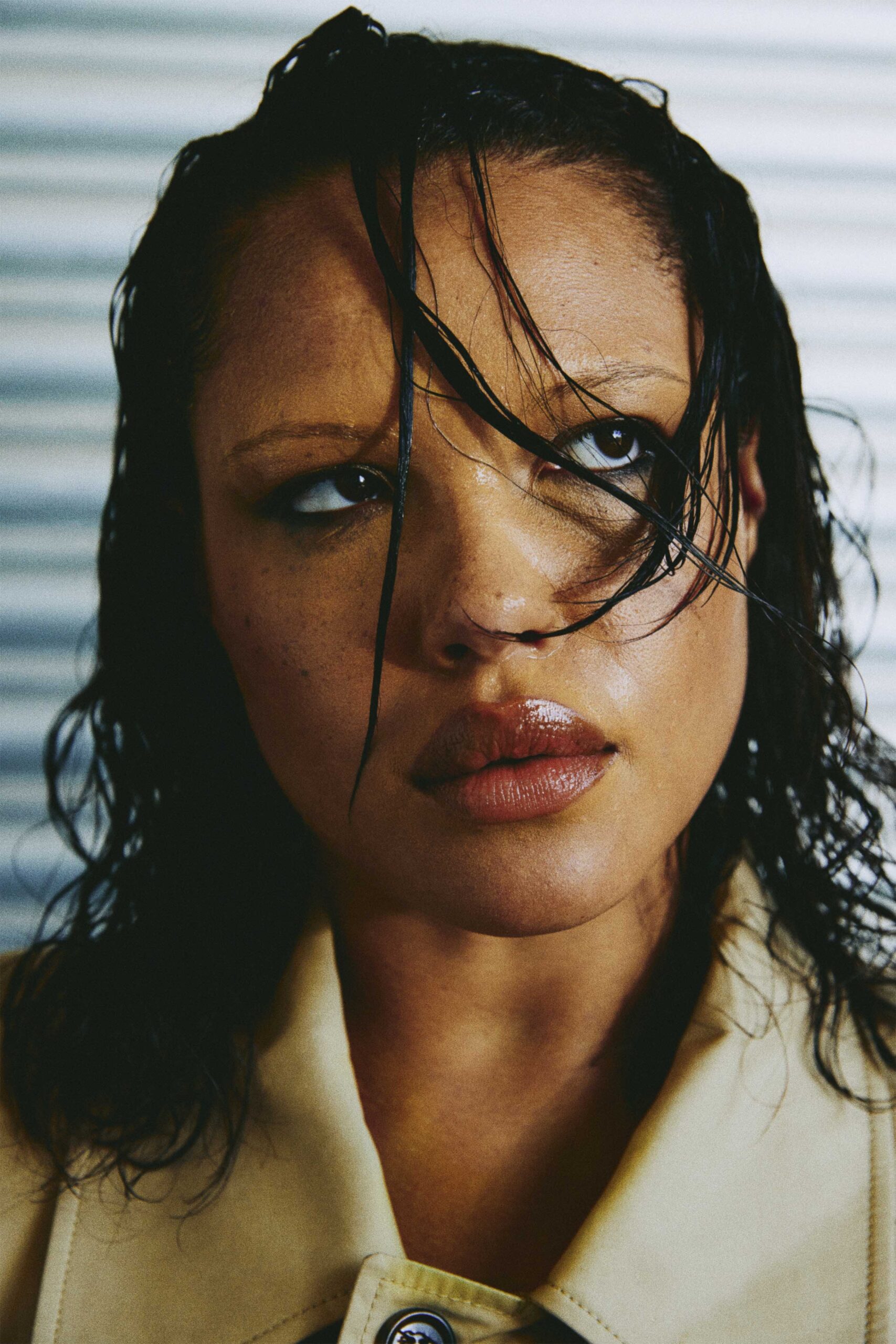
“I’m doing my job. I’m just a guy modeling around. And it’s tough when interviews come up, and people are like, ‘so as an advocate for’ and I’m like, well, I’ve never actually called myself like a body-positive activist.”
Over Alva’s career, the industry has tried to nail down the categorization of her body (but really any body that does not have a waist that measures below 27”). In recent years, “curve” has replaced “plus-size”. Better, but still in line with the idea that there are other model bodies and, therefore, other human bodies that need be identified as such.
It has now been four years since Alva walked the Versace runway. In August of this year, Alva was announced as a nominee for 2024 Model of the Year by the British Fashion Council. With that, it would seem that Alva the model has found the sort of success that any model would dream of. Her image has been accepted and celebrated for both the beauty on the surface and the particular quality her presence represents. To win an award such as Model of the Year seems to proclaim that a model is the “face of” the industry–a representation of where it is going and what it values.
However, it is important to note that Alva is more than an image or a message; she is a person. And if “face of” both flattens the subject onto the page and expands by communicating with specificity, then to be human and to be a person sends the entire premise of “face of” into a tailspin. To be human–to be a full person–means to escape easy categorization. Alva Claire, the person, is currently seeking such an escape–an existence beyond the page and freedom beyond common definitions. Alva Claire the person smiles often, questions herself, is curious, is frustrated, is content, and is in love. We find Alva in all three dimensions, beyond image and representation, in conversation in late August of 2024. She is sitting for an interview at home in southeast London with her partner, Jenna Fletcher, design consultant and founder of the interiors brand Oswalde Shop. The two women speak in soft tones, laughing in between sentences, communicating inside jokes and ideas in brief moments of knowing silence. Alva and Jenna met at the opening of an art exhibit in London in 2021, and the couple moved in together earlier this year. They are still in those early days of building a life together. But Alva declares she is “home” with Jenna. She is fully herself and it is in that comfortable place, as Jenna (JF) interviews Alva (AC), that we find out that Alva’s remarkable face is perhaps the least remarkable thing about her.
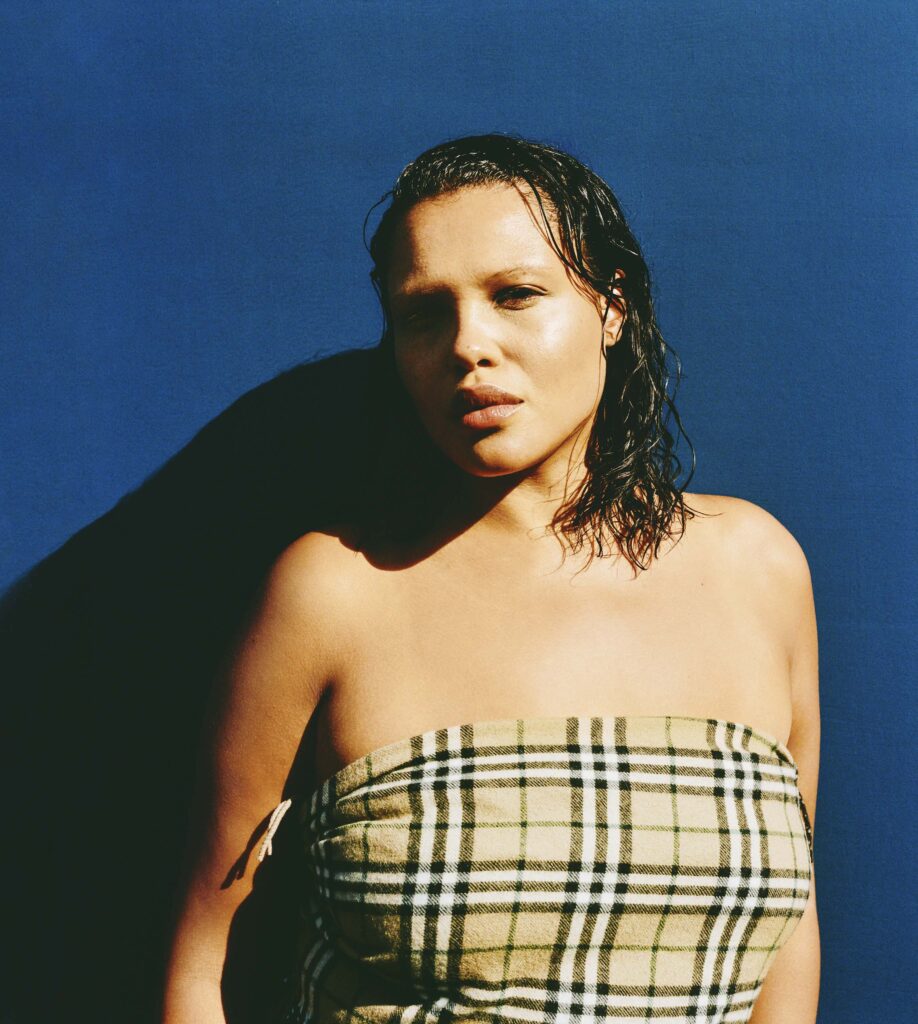
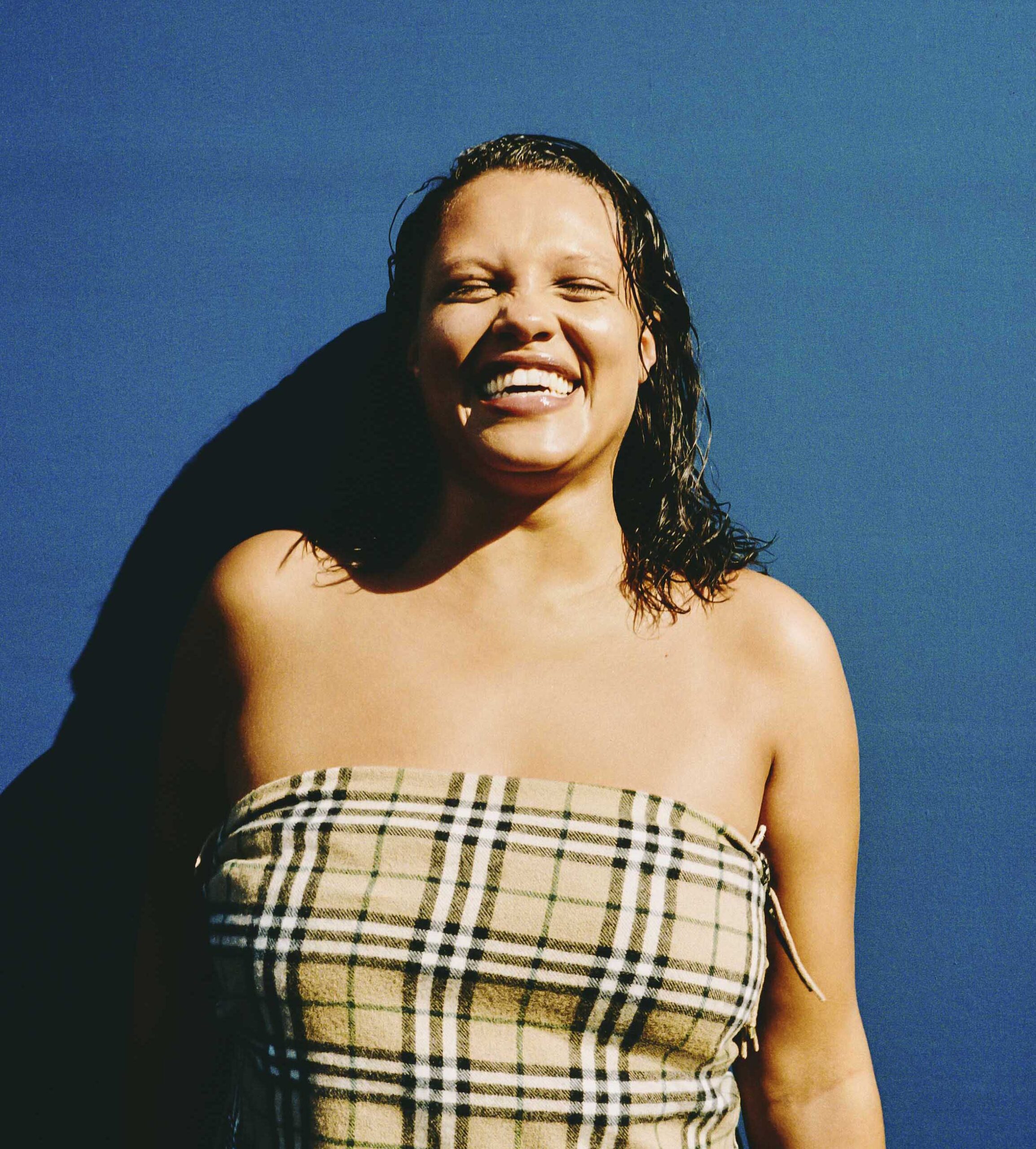
JF: Hi.
AC: Hi.
JF: You look amazing. You always look amazing.
AC: Thank you. [Laughter].
JF: Okay. So, you were recently announced as one of the nominees for Model of the Year for the British Fashion Awards. How does it feel to be recognized in this way, babe?
AC: It feels incredible, actually. It feels amazing to be nominated for something like that, and it’s actually beyond my wildest dreams. I feel just so happy to be here. Also it’s a bit of a rocket up your ass because it just reminds me of all the hard work that I have done over the past–well, I got signed when I was 18 years old and I’m now–
JF: Much older than that.
AC: [Laughter]. It’s just amazing. And it drives me just to continue working harder and also just–I guess when you realize that you’ve done something that you had to imagine because you didn’t see it before, you realize how important a bit of imagination is, and maybe a little sprinkle of delusions of grandeur.
JF: You’ve got to be de-lu-lu.
AC: Just a little bit. [Being nominated] reminds me to continue to have imagination.
I’ve led this week feeling extremely grateful and proud and remembering that it’s nice to step back and just be proud of yourself for a second. And that maybe you’re a big deal.
JF: No, but you are a big deal. Of course, I think you’re a big deal for many reasons, but I think that when you receive an accolade or you receive a nomination for an accolade, I think it’s important to meditate on that. And I think this is really deserved as well. Truly. Not to say that it’s undeserved by others, but I think you have been working so hard for so long and you never fucking gave up. You’ve done the best of jobs and the worst of jobs and the most awesome–you’ve had the most awesome opportunities, and you’ve also dealt with shit opportunities. And I just think it’s amazing that fucking, finally, the establishment has said that you are it because you are.
AC: Thank you for saying that. When I got that news, we were actually in Sweden. I think it was before bed, or we’d just woken up. I was tired. When I got that news, I was just like, “Oh my God. Oh my God.” I didn’t think about all the tough jobs and days and plane rides and disappointments and Pret sandwiches.
JF: Of course, babe. Okay, let’s start with some light-hearted questions. How do we know each other?
AC: You are my wife. Well, no, we are not married just yet. You are my girlfriend and my husband sometimes. You are boyfriend, husband, girlfriend, and partner. Love of my life. In a nutshell.
JF: That’s nice. Tell me about our home.
AC: We moved in May, and it’s our first apartment together. It’s so calm and special. I’ve never felt this way about home ever in my life, actually. And it’s just, I wake up every morning, grateful for the world we created–calm, safe, fun, delicious smelling, always [full of] laughter. [Laughter].
“ I don’t really believe that anyone should tell another person to love their body because I think that it’s such a personal relationship and it’s one that will ever-changing, it’s ever-growing.“
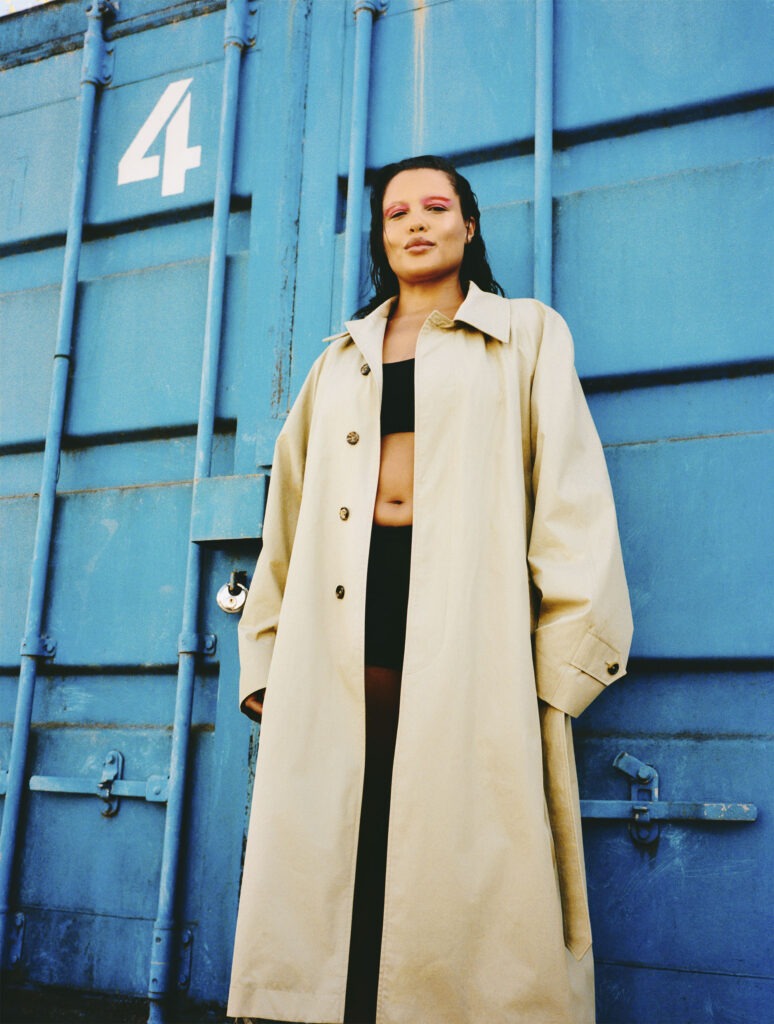
JF: Are there moments of your job where you have to reconcile the suspended performative liminal “Alva Claire” and relocate the real life Alva? What I’m asking is how do you keep it real?
AC: I think that in my job I’m becoming more familiar and comfortable with the idea that there is perhaps a version of “Alva” that grows beyond to people who don’t know me. And then there’s this kind of character that is played out through, if you put me in a flip book, it’s imagery. And then even snippets from interviews or snippets from like bits of Instagram or videos I’ve done over fashion week, there’s a feeling of it’s okay to have this other character that kind of grows just through the work that exists over time. This is why it’s so special to talk to you. ‘Cause I don’t think I often get to talk to someone that knows me so intimately.
There’s the person that grows the name and then there’s who you are. And I think they’re connected. But I feel like when I go to work, I do put on an armor of I’m going to work much like anyone else would actually. I don’t feel like it’s so different, but I think that because the nature of my work is my likeness, that part can be interesting kind of wearing and moving in something that you would never wear, becoming somebody else, but not through language. But through movement and also a vision, bringing something alive, which is why modeling is so fascinating.
JF: We were talking with my dear friend recently about flow and how in relation to your work, you’re constantly abstracting to and from yourself and versions of yourself. How does flow relate to your practice as an image maker?
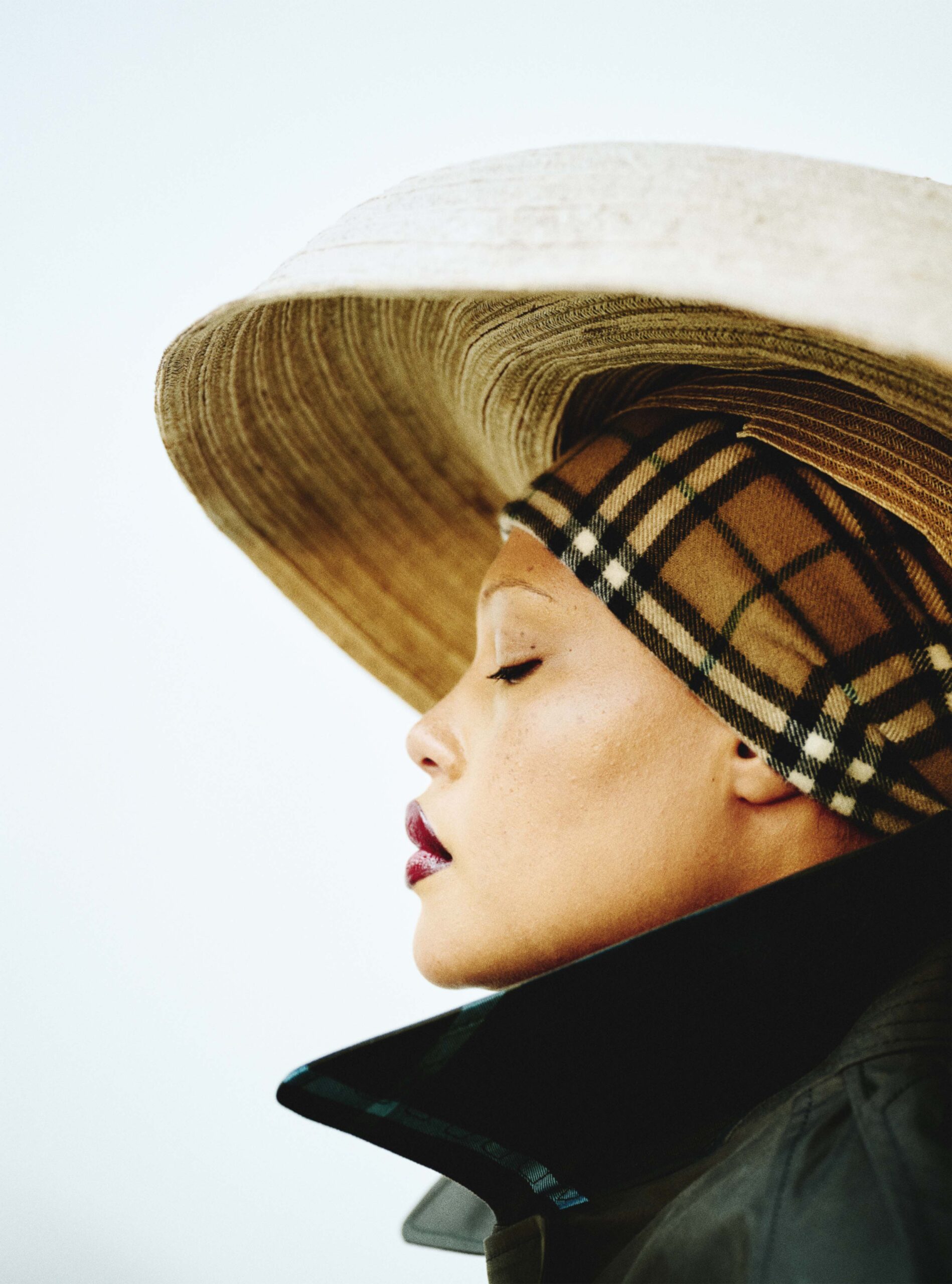
AC: That word. It’s so important to what we do and it could be like a riddle, couldn’t it? ‘Cause it’s kind of invisible. The flow of something. It’s something that either is there or, or isn’t. It’s like my flow comes from understanding the task at hand of that day. I really love narrative. I’ve always loved stories. My dad was a storyteller. We both come from backgrounds where, you know, in Jamaica like stories, proverbs, fables and tales are something that I have grown up with. And so when I feel like the flow is at its best within me is when I’m able to connect with what we’re doing that day. And sometimes you are getting a job done and that isn’t necessarily more of a layer other than your heart. It’s, you know, sell the thing to the people and be hot. I think my best days and those days where I do feel like I’m gaining are when I’m able to connect with not just the people in the room, but the flow works when I’m understanding the character and you feel vulnerable enough to bring it to light and act silly sometimes in front of the camera. On this shoot we were pouring water over my head, and it was this pure joy and euphoric feeling, and I was genuinely feeling that.
JF: What is it like being judged on your appearance?
AC: I think it’s interesting ‘cause we’re all in a way judged on our appearance. I think it is quite healthy for me because I don’t think about appearance in the same way that I feel that others do. I feel like it can be all-consuming for some people that I know but, actually I think I’m more free. I feel more in control, because I’ve seen myself so many different ways.
JF: You’ve been knighted as one of the faces or spokespersons of curve models. How, how do you feel about this responsibility? Because I feel like you are sick of talking about it, I don’t wanna speak for you, but I don’t know whether to talk about it because I know you’re sick of talking about it. Are you a curve model?
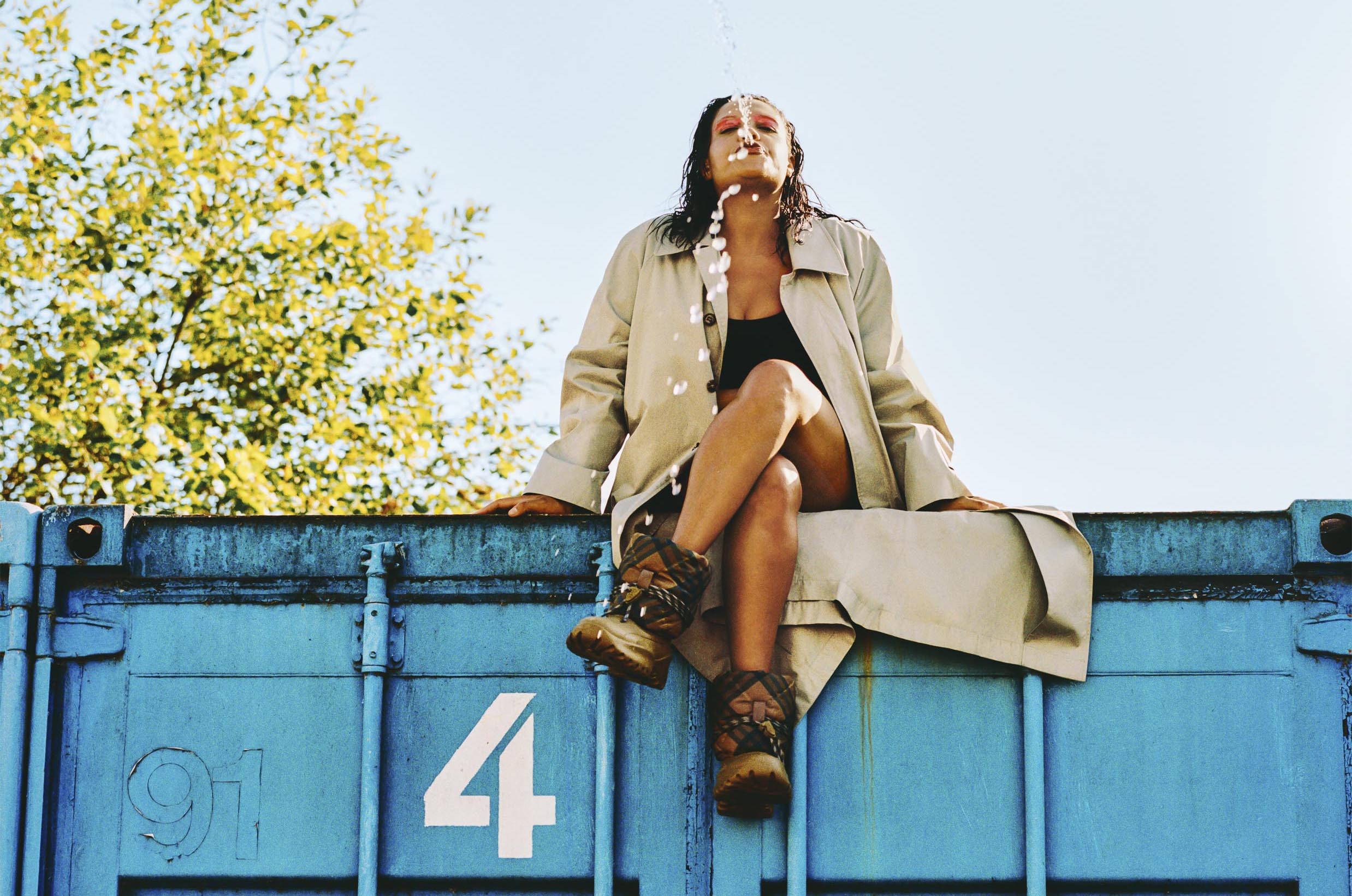
AC: Technically, yes. Because that’s just—what does that mean? Well, it just means that I’m not straight. And sometimes, when I think about it it doesn’t bother me, curve. The terminology doesn’t bother me sometimes because I feel like it’s simply just talking about something technical. It’s like, well this person is this size, and that person’s that size and these clothes need to be made for this. I suppose what I’m saying is I get it, but it’s also irritating. Because I just see myself as a model.
I’m just a guy doing my thing. I’m doing my job. I’m just a guy modeling around. And it’s tough when interviews come up and people are like, “so as an advocate for” and I’m like, well, I’ve never actually called myself a body-positive activist. I’ve never said that.
JF: You naturally kind of are.
AC: I guess. Yeah. I understand that it’s placement in a way for people to understand what I do. But I think that it’s damaging in a way because it’s like the silent assassin. I just like doing my job and not having to talk about it. I’m sick of talking about why the industry hasn’t moved forward or why it’s moving backward, or why it’s moving upside down. It’s not interesting to my practice. I think I want to create, I love working, I love making new images, and I don’t have boundaries and like where I can go with it. I just think it can be quite tiresome and also makes me feel a bit–
JF: It must be a bit tokenizing to feel like your only kind of merits—or your biggest point of merit is that you are curve. And that it’s not just because you’re an extremely wonderful looking human being. It makes me feel we as an industry have a problem with size inclusion. And I think you enjoy it when you’re cast in something when it’s just not spoken about. Like no one needs to make a big song and dance about you being the outlier. You actually kind of shouldn’t be the outlier statistically. But to pull you out and be like, speak on it…
AC: Sometimes I feel bad when I’m not wanting to speak on it, because people are so hungry for me to say things. I think earlier on in my career I was really thinking it would do something good and I thought they would change things, but I actually don’t think the words matter, I think the work speaks for itself. And I think that my pure existence in this space is like, I just want to get on with it. I want it to not be something that’s constantly spoken about because I think it’s odd and it’s damaging.
JF: Who influences you?
AC: Honestly, it’s old people. I say it with my full chest. I say this because the only people that I notice are old people now. When people are wearing something, it’s often like old men. And I guess the freedom of old people and very young people like two years old. Those age groups, they have it figured out.
JF: I think we’re post being put together. AC: Yeah. Maybe that’s the phrase that I’ve been searching for because that’s how it feels. It’s like I hate being put together, it is just an awful feeling.

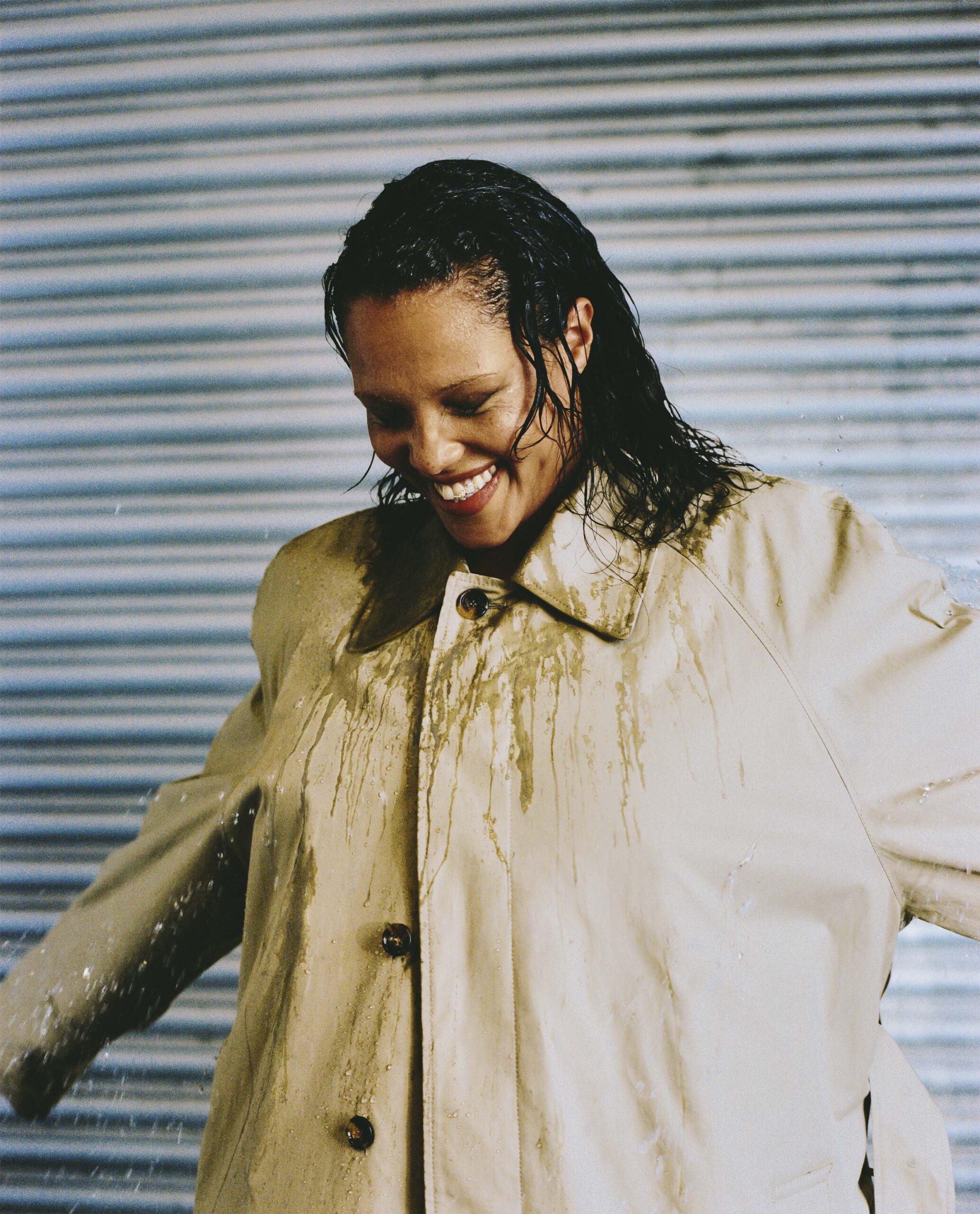
AC: I don’t know who I influence. I think that I like to think I influenced myself in a lot of ways. And I like to think I positively influenced my niece, who’s the light of my life.
JF: I think you influence everyone around you to be a wonderful shiny person. I do think you influence people. Your aura is very shiny and it’s kind of infectious.
Okay! What’s it like being a lesbian?
AC: [Laughter]. Buggy!
JF: Like it must feel like the best thing in the world? I’m sorry, but like join us.
AC: Join us!
JF: Lesbians are so funny.
AC: I know.
JF: Is that what you identify as?
AC: I would say I identify as queer. But like I was saying earlier, when I said you are my wife, my life partner, the love of my life, all of these things kind of mean the same thing. Some days I’m like, I’m queer. Other days I’m like, no, I’m a fucking lesbian. It depends on the day. But, yeah, it’s great being a lesbian.
JF: Yeah, you love being a gaylord. [Laughter]. Okay, let’s talk about the body as a tool for liberation.
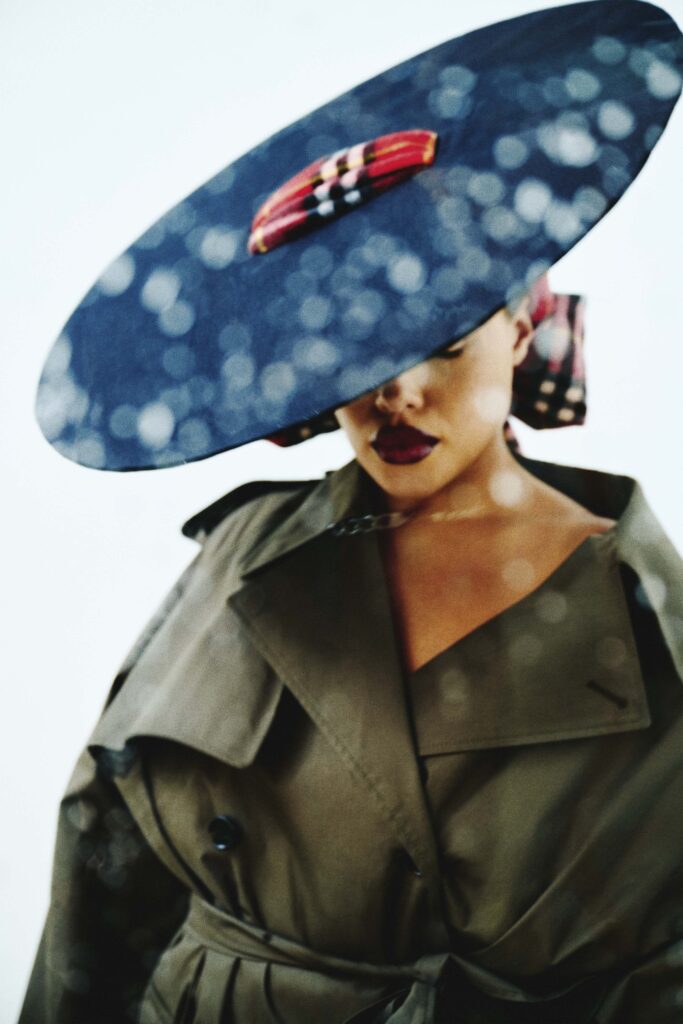
“ I don’t really believe that anyone should tell another person to love their body because I think that it’s such a personal relationship and it’s one that will ever-changing, it’s ever-growing.“
AC: Wow! Okay. I feel like the body is a vessel and it’s very powerful, you know, you and your body roll together. I realize how it carries me through life. And the importance of our own bodies and what they do for us or what they don’t do for us. Of course it’s liberating. Of course it’s powerful. I feel like the relationships we have with our bodies are very complicated. And sometimes they’re good and sometimes they’re bad and sometimes they’re everything in between. I don’t really believe that anyone should tell another person to love their body because I think that it’s such a personal relationship and it’s one that is ever-changing, it’s ever-growing. And it’s just deeply personal.
And also how upset people can get by looking at a body that’s different. Get so mad. I’m like, wow, I’m so powerful. People get so mad.
JF: Okay, I’m coming to the end of our questions. The last person I interviewed was Gaetano Pesce. I’m going to ask you a couple of the questions I asked him. Because you are both my favorite radical artists.
What makes you emotional?
AC: Thinking about my younger self. And also feeling like pure love.
JF: You’re so cute. What’s pure love to you?
AC: It’s like jumping on a trampoline.
JF: How might your practice change in the future?
AC: Well, the word on the street is that AI’s gonna take our jobs. But—
JF: You look like an AI, so–
AC: Exactly. [Laughter]. No, but I think that models will gain more respect. And I think there’ll be many more different types of models–we will continue to see what we think of a model change and grow over time. And I’m excited to see how that happens and excited to see what new, interesting faces and characters are going to be involved in this career. I think that models will also work longer. I’m just interested to also see what’s next in my career.
JF: What do you want to do before you die?
AC: Have a baby with you.
JF: A few?
AC: Yeah, a few.
AC: I love you.
JF: Love you, too. I really need a nap. AC: Okay, we’re done.
This interview has been edited for clarity and length.
All clothing and boots: Burberry
Sports bra and shorts: Model’s own
Headpieces: jjmn.studio

